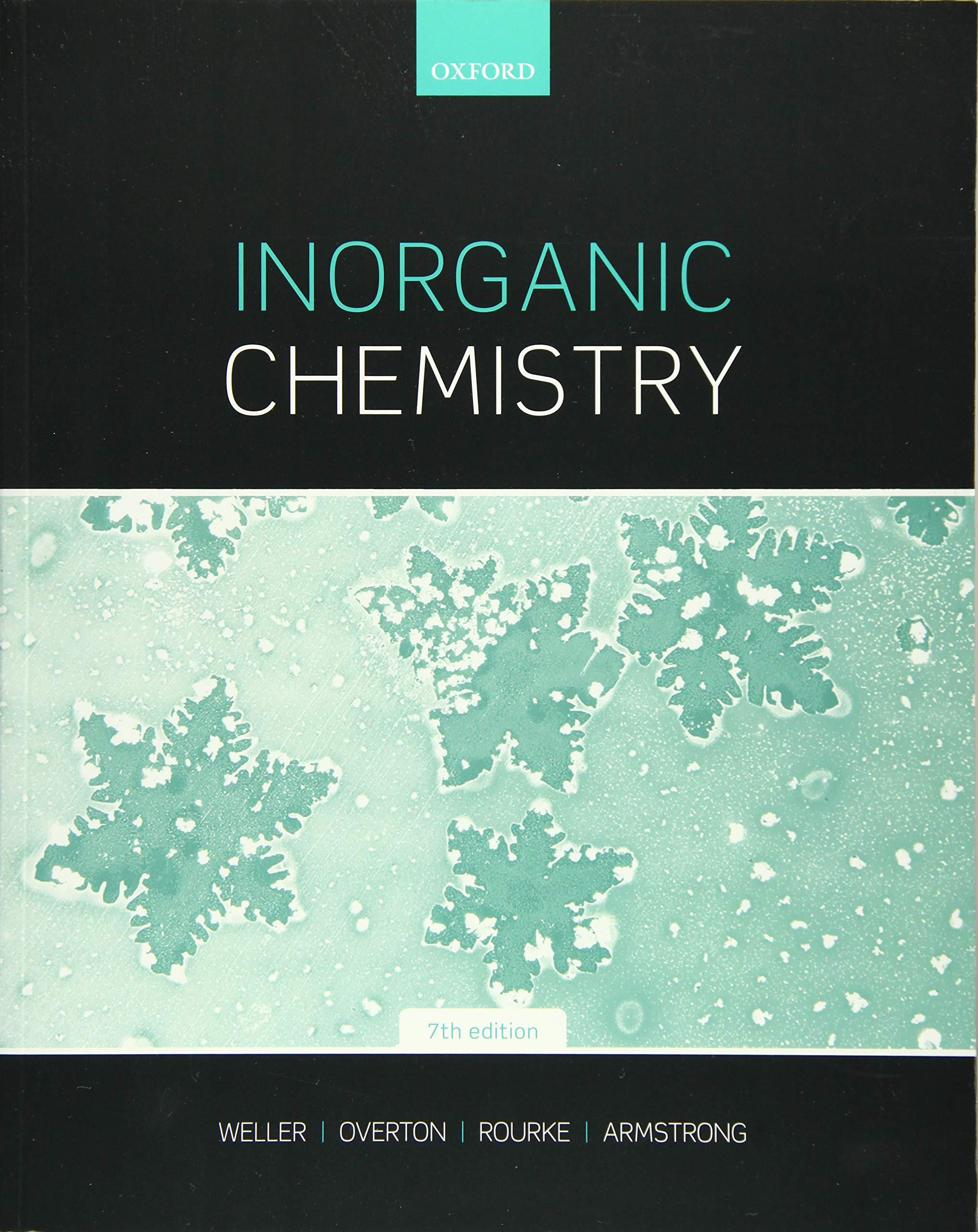The precipitation of Fe(OH) 3 discussed in the chapter is used to clarify waste waters, because the
Question:
The precipitation of Fe(OH)3 discussed in the chapter is used to clarify waste waters, because the gelatinous hydrous oxide is very efficient at the co precipitation of some contaminants and the entrapment of others. The solubility constant of Fe(OH)3 is Ks = [Fe3+][OH−]3 ≈ 1.0 × 10−38. As the autoprotolysis constant of water links [H3O+] to [OH–] by Kw = [H3O+][OH–] = 1.0 × 10–14, we can rewrite the solubility constant by substitution as [Fe3+]/[H+]3 = 1.0 × 104.
(a) Balance the chemical equation for the precipitation of Fe(OH)3 when iron(III) nitrate is added to water.
(b) If 6.6 kg of Fe(NO3)3.9H2O is added to 100 dm3 of water, what is the final pH of the solution and the molar concentration of Fe3+, neglecting other forms of dissolved Fe(III)? Give formulas for two Fe(III) species that have been neglected in this calculation.
Step by Step Answer:

Inorganic Chemistry
ISBN: 9780198768128
7th Edition
Authors: Mark Weller, Tina Overton, Jonathan Rourke





